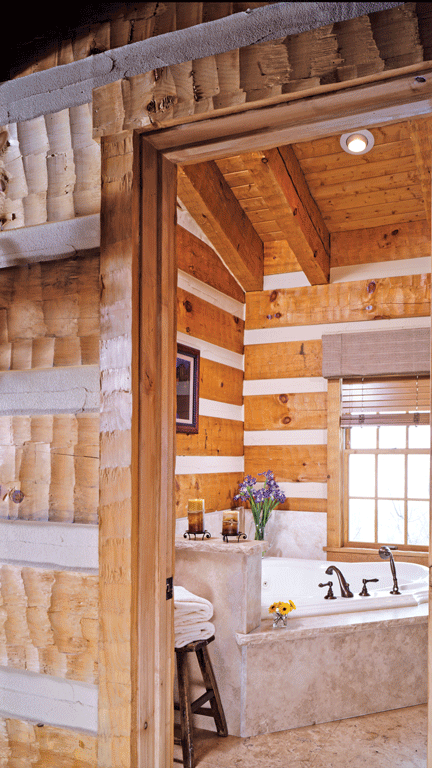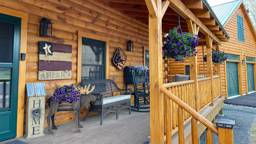
Log homes have a laid-back charm that’s undeniable, and one component that’s often singled out as a defining feature is the white bands of material between log courses, despite the fact that many people don’t know what it’s called. The term is “chinking,” and for some log homes, chinking plays a vital role in its weathertightness; while for others, it’s purely decorative.
In days of yore, chinking was made from a rigid concoction of mortar, mud, hay and stone — a mixture that notoriously crumbled and separated from the logs as it aged.
Today’s chinking is comprised of flexible, elastic and long-lasting synthetic material, effectively sealing the space between log courses, even as the home settles over time — as long as it’s properly applied. Here are six keys to chinking application that will last. (You may even try to do it yourself!)
Shore Up the Surface.
Logs should be clean, dry and free of debris. Power washing may be necessary for log homes that have been standing for a number of years.
Back it Up.
A backer rod is a foam strip, which rests between the gaps in the log courses so that the chinking has a surface to adhere to. The rod should fit snugly against the logs, about 1/4 to 3/8 inch behind the surface for square logs and far enough out to create a 1/4-inch bead on round logs (the actual depth depends on the diameter of the log itself).
The Right Equipment.
This is critical to a good chinking job. A bulk loading gun allows an even bead to be applied to the surface. Then a bent trowel about the width of the chinking joint and a spray bottle filled with tap water are used to smooth the material without leaving marks. (If this is a DIY project, wear old clothes and shoes. You WILL get some on you and chinking is hard to wash out.)
Proper Technique.
Though a pro knows exactly what to do, it’s helpful if you, too, understand the process. It’s kind of like icing a cake: Hold the gun (or chinking bag if you’re not using a gun) firmly against the backer rod. Then apply the material so that it touches the backer and the surface edge of each log. Spraying a little water on it helps the trowel glide across the chinking, smoothing it out and keeping it from sticking.
Stay Calm and Trowel On.
It’s best to take it one row at a time by applying a line of chinking 4 to 5 feet long and then troweling it out. Along the way, it’s important to ensure that the material is attaching securely to the top and bottom of the logs.
Practice Makes Perfect.
If you’re enlisting a pro to handle your home’s chinking, no training is needed! But if you’re tackling it yourself, it’s best to begin in a spot that’s out of site. The inside of a closet is a good place to start — and don’t be surprised if, after you get the hang of it, you decide to go back and redo the section you started with. The more you do it, the better you’ll get.
See also: How to Choose a Stain for Your Log Home










